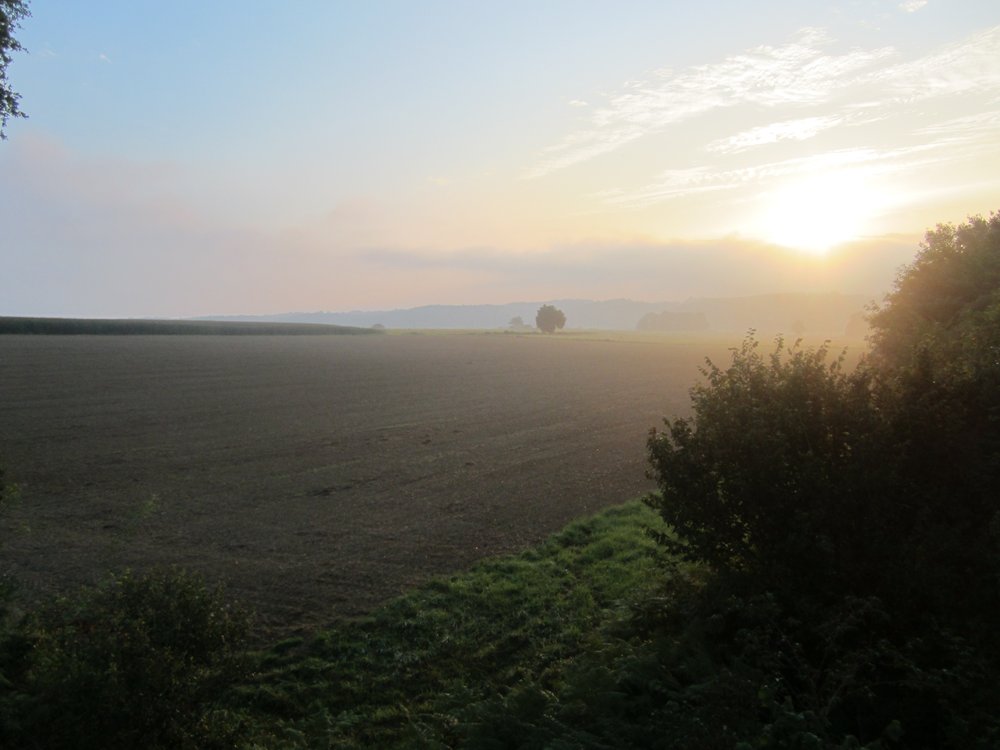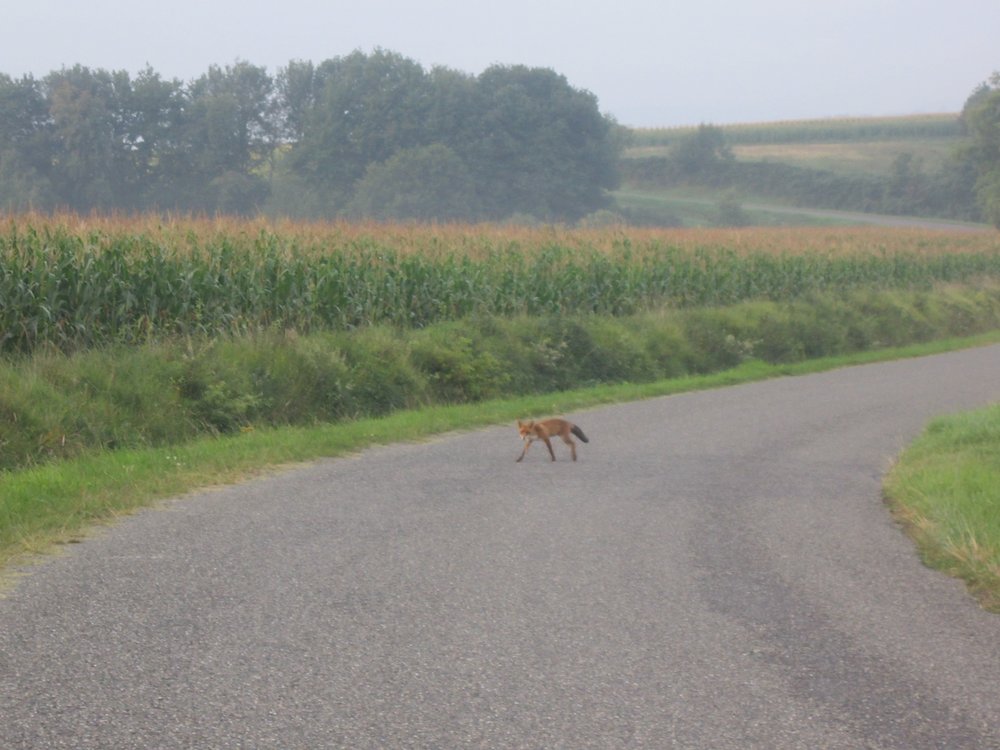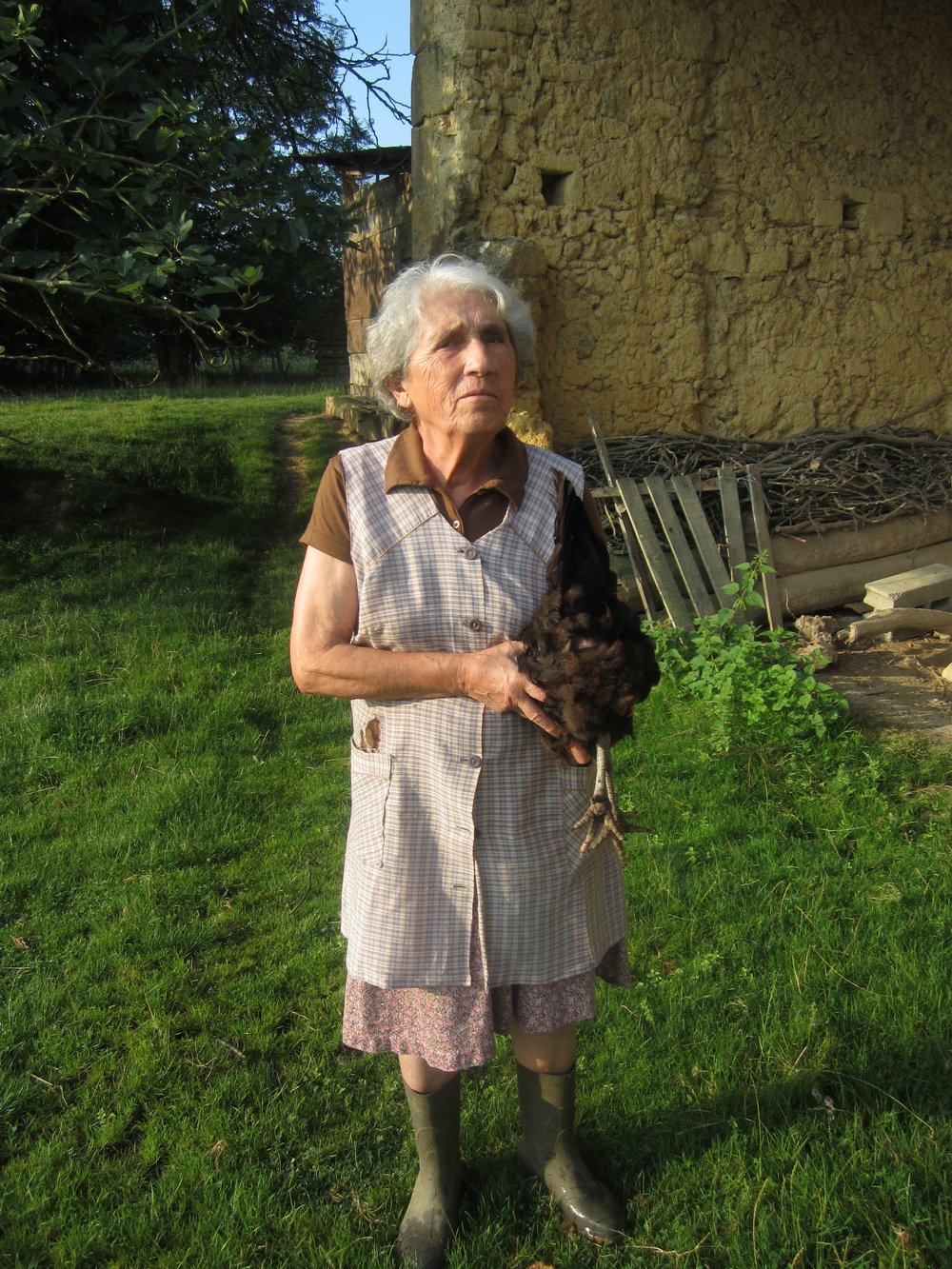
The sun pops over the hills on the eastern end of the valley and the world is washed in light. The fields of sunflowers and corn look magical, bright. I hear the cackle of woodpeckers in the far woods. As I make my way there, I hear a gunshot from the same woods. It is not any hunting season so I decide that may not be the place to walk. Still, I loiter about on the bridge that separates the Gers from the Haute Pyrenees, visiting with a great tit, and some red tails.

And here’s the strange thing: by the end of the day I will see five of these green woodpeckers. The question is, were they around all the time and I simply did not see them? Or, have they emerged? I think probably the former, how knowing what to look for triggers something in our minds so that we can see it again. I remember when I first followed the call of the great crested flycatcher to find the bird sallying at the top of a tree. After that moment, I heard and saw flycatchers every day, and a bird I did not know, seemed suddenly a common bird.
I loop up the hill, taking the long way home, and another woodpecker screams overhead, landing in a nearby tree. Also green! I feel as if I have conjured these birds.
I walk the same path I walked last night. It was the full moon, the Sturgeon Moon. At home, I always paddle out into the night on the full moon, and the Sturgeon Moon is my favorite (yes, there’s a chapter in my book devoted to the somewhat hallucinatory experience of paddling the full moon). So a walk through the village would have to substitute for my watery ramblings. The moon shone down, illuminating the rough road, but not bright enough that I could find the owl calling from behind a crumbling house.

I wonder when Odette, now 82, will stop tending to her chickens. Last night as we sat outside in the courtyard and ate our dinner of duck confit made by Odette we were all aware that this was the last time we would eat this rich, dense meat. The days of raising ducks, of feeding them corn, then making foie gras and confit are over. It’s just too much work.
One winter I was living in the house and would hover in the barn while Odette fed her ducks. It was an odd, loving process. She would place the duck in a box, its neck sticking out. Then she’d straddle the box and take the duck’s neck in her hands (vegetarians can just skip the rest of this account). She’d talk to the duck, massaging its neck. Then she would insert a long funnel, and grind the corn that would fall directly into the duck’s stomach. In this way, it fattened beyond what is natural. Any stress or abrupt motions might break the duck’s neck. So Odette’s movements were gentle, tender.
That was the case as she stuck the chicken into its cage to relearn its relationship with eggs. She spoke to the bird, reminding it to drink water, to be well.